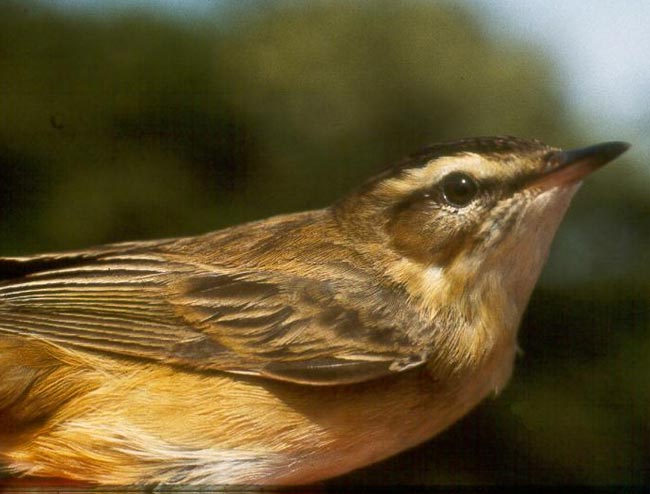Feathers Could Yield Map to Predict Bird Flu Outbreaks

Chemical clues in feathers could help scientists more easily track the migratory paths of birds carrying avian flu, a finding that could help map and predict the virus' spread.
The scientists have developed a new method to measure very low levels of the metal strontium in a sedge warbler's feathers, a technique that could be used on all birds. The technique, detailed in the current issue of the Journal of Analytical Atomic Spectrometry, proved successful in linking the birds' feathers with their most recent stopovers. ?????
"By determining migration pathways, the arrival of potential vectors of diseases from infected areas can be anticipated," said lead study author Laura Font of the University of Durham in England.
- Video: Bird Flu Pandemic
Eating strontium
The relative concentrations of strontium isotopes, which are elements with the same number of protons but a different number of neutrons in the nucleus, have allowed geologists to date and characterize rocks.
Turns out this same "isotopic signature" gets carried through the food chain. Strontium marks from the bedrock show up in the overlying soil and get taken up by the area's plants. Nibbling insects and other herbivores incorporate the strontium into their bodies, so that when a bird like a warbler snags a tasty meal it also gets marked.
Before lift-off from their breeding grounds, migratory birds usually shed and re-grow their feathery coats. The feathers mirror the isotopic signature of the region where they were grown.
Get the world’s most fascinating discoveries delivered straight to your inbox.
In the past, scientists have measured the abundance of strontium isotopes from a bird's bones, a method that required killing the animals. While bones are loaded with strontium, feather shafts contain just traces of the element. Until now, measuring such low concentrations has been impossible with traditional methods.
Feather clues
"We wanted to find the exact location of where these birds have been breeding, and then where they go and spend the winters," Font told LiveScience.
Font's team analyzed levels of strontium isotopes in the shafts and veins of feathers from sedge warblers [image] and then mapped how the levels changed with geographic location. They were able to match the feather strontium and that of the bedrock from the bird's hometown.
Other techniques for tracking bird migrations and the spread of avian diseases include marking the individuals with metal leg rings or simply counting birds at various migratory stopovers. Font says these techniques are labor intensive and don't reveal the origin of individual birds.
In the long run, the scientists hope to come up with a map of sorts to help predict the spread of the avian flu. The map would show the isotopic signatures for various regions around the world and an overlay of migratory routes for certain birds.
- Video: Extraordinary Birds
- Top 10 Mysterious Diseases
- Images: Rare and Exotic Birds
- Cowbirds: Thugs of the Bird World
Special Report: Flu Fears
Jeanna Bryner is managing editor of Scientific American. Previously she was editor in chief of Live Science and, prior to that, an editor at Scholastic's Science World magazine. Bryner has an English degree from Salisbury University, a master's degree in biogeochemistry and environmental sciences from the University of Maryland and a graduate science journalism degree from New York University. She has worked as a biologist in Florida, where she monitored wetlands and did field surveys for endangered species, including the gorgeous Florida Scrub Jay. She also received an ocean sciences journalism fellowship from the Woods Hole Oceanographic Institution. She is a firm believer that science is for everyone and that just about everything can be viewed through the lens of science.


